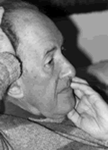
|
|





|
Michael Cohen Principle Researcher—Interactive Visual Media Group MICROSOFT RESEARCH Michael F. Cohen joined Microsoft Research in 1994 from Princeton University where he served on the faculty of Computer Science. Before, Dr. Cohen served on the Architecture faculty at Cornell University and was adjunct faculty at the University of Utah. Dr. Cohen received his Ph.D. in 1992 from the University of Utah. He also holds undergraduate degrees in Art (Beloit College) and Civil Engineering (Rutgers University), and an M.S. in Computer Graphics (Cornell).
His early work at Cornell and Princeton focused on the radiosity method for realistic image synthesis, for which he received The 1998 SIGGRAPH Computer Graphics Achievement Award. At Microsoft, Dr. Cohen has worked on a number of projects, including computational photography, image based rendering, animation, camera control, and more artistic, non-photorealistic rendering. The animation work focused on means to allow simulated creatures to portray their emotional state. In the 1990s, his foundational work on image-based rendering, dubbed The Lumigraph, captured the complete flow of light from an object for later rendering from arbitrary vantage points. Recent work has focused on computational photography applications, ranging from segmentation and matting of images and video, technologies for combining a set of images as a Photomontage, to the creation and viewing of high dynamic range, very high resolution panoramas. |


|
Gerard Salton (1927- 1995) A towering figure in the field of information retrieval, Gerard Salton synthesized ideas from mathematics, statistics, and natural language processing to create a scientific basis for extracting semantics from word frequency. The impact of his contributions is profound - five textbooks, over 150 research papers, and dozens of Ph.D. students. The modern computer science and information science research scene, with its terabyte databases, Web, and related technologies, owes a great deal to Gerry's pioneering efforts.
This lecture series honors our former colleague with speakers who similarly are innovators in their fields.
|